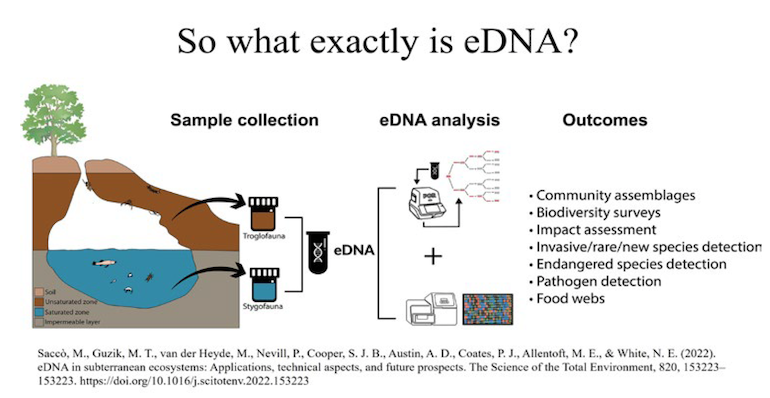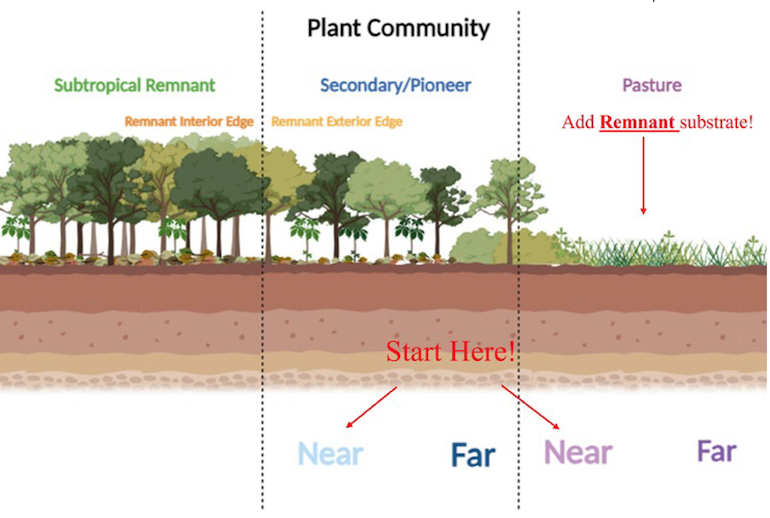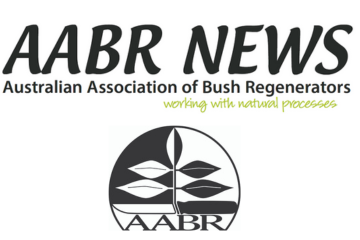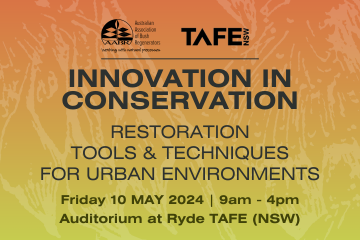Lachlan Curran
PhD student, University of Queensland.
Beneath our feet lie some of the most diverse ecosystems on the planet. It is estimated that over half of all species reside within the soil. The complex interactions between these species and the wider environment drive a range of ecosystem services. These services are influenced by, and are critical for, the functioning, stability and resilience of the aboveground macroscopic ecosystems we are used to engaging with. We have only begun to scratch the surface of these interactions, which likely vary in their direction and magnitude of effect.
Over the last few decades, existing technologies have been refined, and new technologies have emerged which allow us to probe deeply into these relationships. Whilst I find this interesting from an academic perspective, we can also apply these technologies to better inform our decision making in restoration. In December 2023, I had the privilege of presenting some of these methods to the AABR AGM. The key messages of this presentation include the potential applications of DNA metabarcoding for informing the on-going work of bush regenerators.
My Research
In 2022, I was given the opportunity to investigate the soil fungi community within Mary Cairncross Scenic Reserve in Maleny (situated on Jinibara Country), in South East Queensland, as part of my Honours Thesis with the University of Queensland. I chose to focus on the fungal component of this ecosystem for several reasons. Firstly, soil fungi, alongside bacteria, are the dominant taxa within the soil ecosystem. Therefore, they strongly influence the rate of key ecosystem services that are of interest to bush regenerators, such as decomposition and nutrient cycling.
Of particular interest are mycorrhizal fungi, which many people have heard of and which form mutualistic associations with one or more plants, and are critical for ecosystem function. They provide their host plants with water, limiting nutrients and protection from pathogens and herbivores in return for the sugars and amino acids. Many plants require specific mycorrhizal partners to establish and reach reproductive maturity. Many animals, such as bandicoots and bilbies, also rely on mycorrhizae for their diets. Fungi are also the major decomposers within the ecosystem and fungal pathogens of plants and animals are important in maintaining their population dynamics.
Using DNA for identification
Therefore soil fungi are critical to the overall functioning of an ecosystem, yet they are also often overlooked in ecosystem management and restoration. This isn’t to say restoration practitioners are ignorant of, or do not care about fungi! It is simply easier to record and observe plants and animals than fungi, which spend most of their lives invisible to us. One way to get around this problem is to use gene technologies, such as DNA metabarcoding (a method of specimen identification using short, standardised segments of DNA), or the analysis of particular sections of DNA from many organisms.
Within the genomes of all organisms lie regions of DNA that mutate at a far slower rate than others. Mutation is a random process that we can think of as randomly changing one letter in a book. Most of the time, this change doesn’t make sense, which reduces the fitness of an organism. Therefore it is less likely to stick around in a population over time. For example, all cells contain structures called ribosomes that are used to construct proteins. As ribosomal DNA encodes very specific, very complex instructions, these mutations are less likely to be passed down. Consequently, ribosomal DNA is perfect for identifying species, as we can compare very similar stretches of DNA across whole sections of the tree of life. By extracting these sections from a soil sample and amplifying them to detectable levels, we can then figure out which organisms might be in our ecosystem.
 I say ‘might’, as this method doesn’t just collect DNA from living organisms. We also capture DNA from dead matter, faeces, hair, and other traces of living organisms. However, as DNA tends to degrade quickly outside of a living cell, we can be confident that most of what we are detecting comes from living organism.
I say ‘might’, as this method doesn’t just collect DNA from living organisms. We also capture DNA from dead matter, faeces, hair, and other traces of living organisms. However, as DNA tends to degrade quickly outside of a living cell, we can be confident that most of what we are detecting comes from living organism.
I used this method to determine the composition of the soil fungal community within Mary Cairncross Scenic Reserve. At this site, the Sunshine Coast Regional Council has been restoring parcels of land around the remnant subtropical rainforest. This allowed me to sample across a gradient of land use, from subtropical remnant to secondary mature woody pioneers species to pasture.
Alongside my DNA samples, I also measured multiple environmental properties that we know influence the composition of this community. This included soil and litter nutrients; properties of the above ground plant community; and geographic distance between samples; and distance between samples and the edge of the remnant. I also assigned the known functional guild of each fungal taxon as either free living saprobe (fungus living on decaying organisms), plant pathogen, endomycorrhizal and ectomycorrhizal fungi (the latter do not penetrate as deeply into the plant as endomycorrhizal fungi). These methods provided me with a wealth of environmental data at relatively low cost and effort.
Results of research
My investigation yielded two key results:
First, the compositional variation of the fungal community within the soils was extremely low in pasture soils relative to soils dominated by woody vegetation. At this scale (10s to 100s of metres), the composition of the soil fungal community is strongly influenced by the chemical and structural variation of the soil, which in turn is driven by the diversity and type of plant species within the site. This diversity was greater in soils dominated by woody vegetation relative to the pastures. In essence, there were more things on the menu to eat, and more places to live in the woody environments which attracted a greater diversity of species.
Second, as the distance from the remnant edge increased, total fungal species richness decreased.
Together these two results tell us that we can expect fewer species, in less fewer combinations, in herbaceous environments far from the remnant vegetation.
How might these results be used to inform restoration in the site?
Currently we do not understand the ecology of most fungi species we detect in our samples. Of those we do understand, it is very difficult to manipulate their populations towards a desired outcome.
Instead, we can fall back to some core ecological principals. As the taxonomic diversity within an ecosystem increases, so too will its functional diversity. As this functional diversity increases, so too will the functional redundancy, or the number of species that perform very similar functions.
We consider a healthy ecosystem to possess both high functional diversity and redundancy. Therefore, sites close to a remnant ecosystem, with a more diverse plant community should be prioritised for restoration.
We can also increase the diversity of the fungal community further by supplementing the site with complex substrates like those that can be found in the remnant. In doing so, we can select for species that are functionally, if not taxonomically, similar to that of the remnant. By surveying the soil fungi community, we can better determine which sites we should prioritise for restoration.
DNA metabarcoding may also be used to monitor our long-term restoration efforts. In theory, the functional and taxonomic composition of the soil fungi community should become more similar to that of the remnant over time. If we fail to see this change, alternative strategies may be required. For example, this may help us to determine if a site may require more direct intervention, such as through active plantings or abiotic soil amendments.
Soil ecosystems are breathtaking in their diversity and complexity, and it is my privilege to explore this world everyday in my work. Whilst I have had to summarise a great deal of what I have learned, I believe this work demonstrates the importance of the soil fungal community in ecosystem function and restoration. I also believe that this same sort of data can be acquired by any bush regenerator with the right support. There is so much left to learn about the earth beneath our feet, and I look forward to every discovery.
Diagram shows when planning restoration, prioritise sites close to a remnant ecosystem, as these have a more diverse plant community.
Sites which are degraded may not have such biodiversity. In these areas, fungal biodiversity can be increased by supplementing with complex substrates such as those which are found in the remnant.
We can better determine which sites we should prioritise for restoration by surveying the soil fungi community,
Sourcing substrate involves taking samples from nearby remnants from a diverse range of litter types.
Watch the video of Lachlan’s presentation at the AABR AGM




Leave A Comment